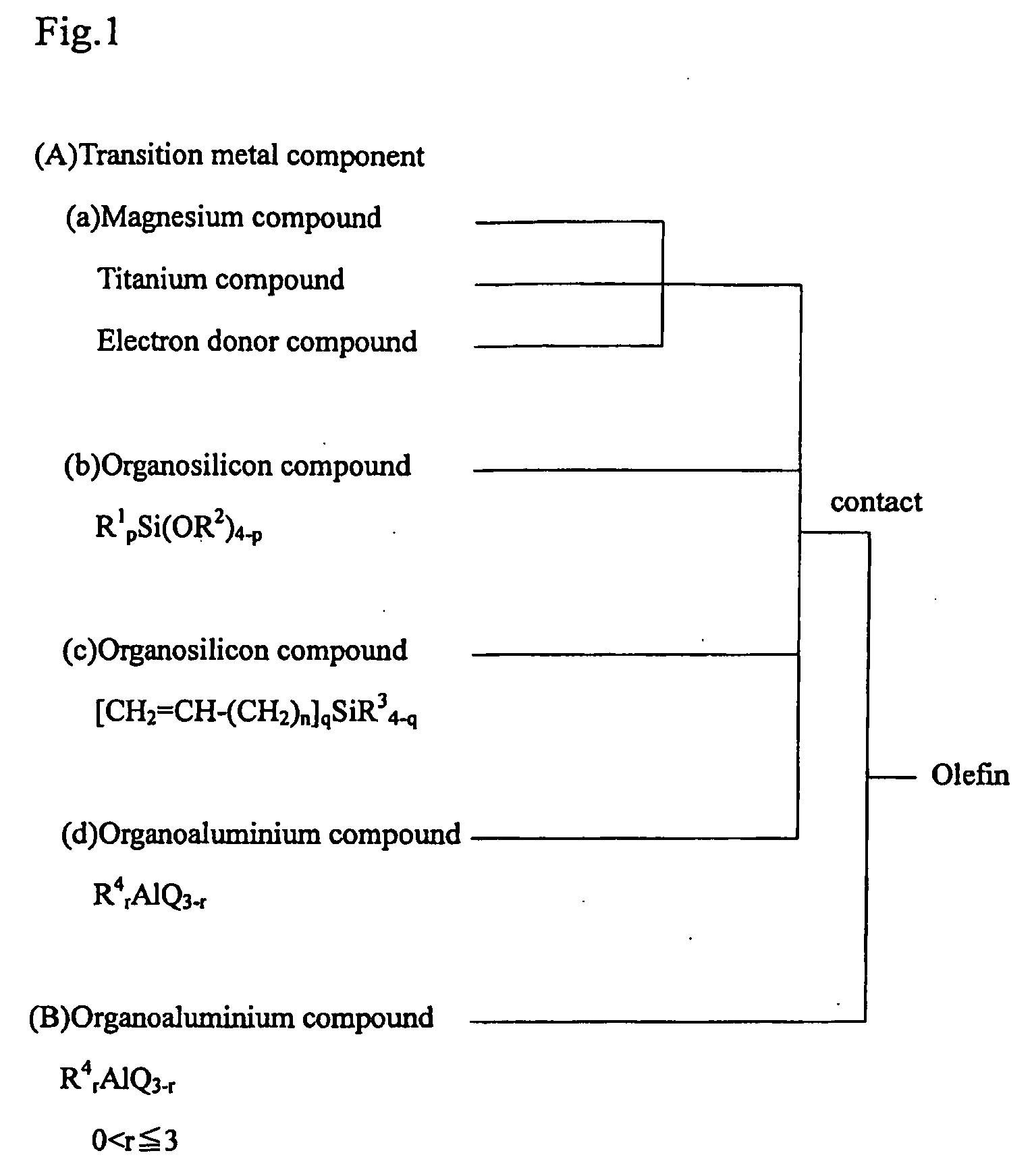Solid catalyst component and catalyst for polymerization of olefin, and method for producing polymer or copolymer of olefin using the same
a technology of solid catalyst and polymerization, which is applied in the direction of catalyst activation/preparation, physical/chemical process catalysts, chemical/physical processes, etc., can solve the problems of insufficient high-segment polymer production, limited quantity of hydrogen which can be added, and productivity decline, so as to reduce the amount of hydrogen used, the effect of increasing the melt flow rate and increasing the catalytic activity
- Summary
- Abstract
- Description
- Claims
- Application Information
AI Technical Summary
Benefits of technology
Problems solved by technology
Method used
Image
Examples
example 1
Preparation of Solid Component
[0088]A 2,000 ml round bottom flask equipped with a stirrer, of which the internal atmosphere had been sufficiently replaced with nitrogen gas, was charged with 150 g of diethoxymagnesium and 750 ml of toluene to prepare a suspension. The suspension was added to a solution of 450 ml of toluene and 300 ml of titanium tetrachloride in another 2,000 ml round bottom flask equipped with a stirrer, of which the internal atmosphere had been sufficiently replaced with nitrogen gas. The suspension was reacted at 5° C. for one hour. After the addition of 22.5 ml of di-n-butyl phthalate, the mixture was heated to 100° C. and reacted for two hours with stirring (first reaction). After the reaction, the resulting reaction mixture was washed four times with 1,300 ml of toluene at 80° C. After the addition of 1,200 ml of toluene and 300 ml of titanium tetrachloride, the reaction mixture was heated to 110° C. and reacted for two hours with stirring (second reaction). T...
example 2
[0096]A polymerization catalyst was prepared and polymerization was carried out in the same manner as in Example 1, except that triallylmethylsilane was used instead of diallyldimethylsilane. The results are shown in Table 3.
example 3
[0097]A polymerization catalyst was prepared and polymerization was carried out in the same manner as in Example 1, except that diallyldichlorosilane was used instead of diallyldimethylsilane. The results are shown in Table 3.
PUM
| Property | Measurement | Unit |
|---|---|---|
| molecular weight distribution | aaaaa | aaaaa |
| molecular weight distribution | aaaaa | aaaaa |
| durability | aaaaa | aaaaa |
Abstract
Description
Claims
Application Information
 Login to View More
Login to View More - R&D
- Intellectual Property
- Life Sciences
- Materials
- Tech Scout
- Unparalleled Data Quality
- Higher Quality Content
- 60% Fewer Hallucinations
Browse by: Latest US Patents, China's latest patents, Technical Efficacy Thesaurus, Application Domain, Technology Topic, Popular Technical Reports.
© 2025 PatSnap. All rights reserved.Legal|Privacy policy|Modern Slavery Act Transparency Statement|Sitemap|About US| Contact US: help@patsnap.com

